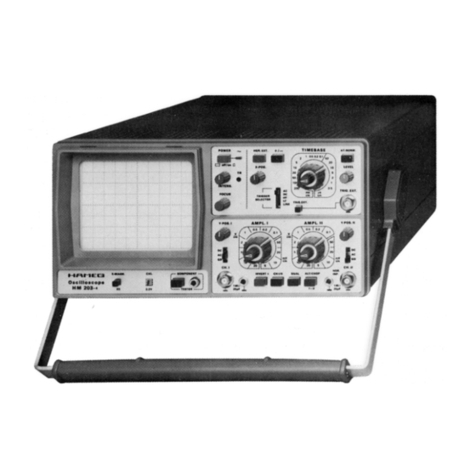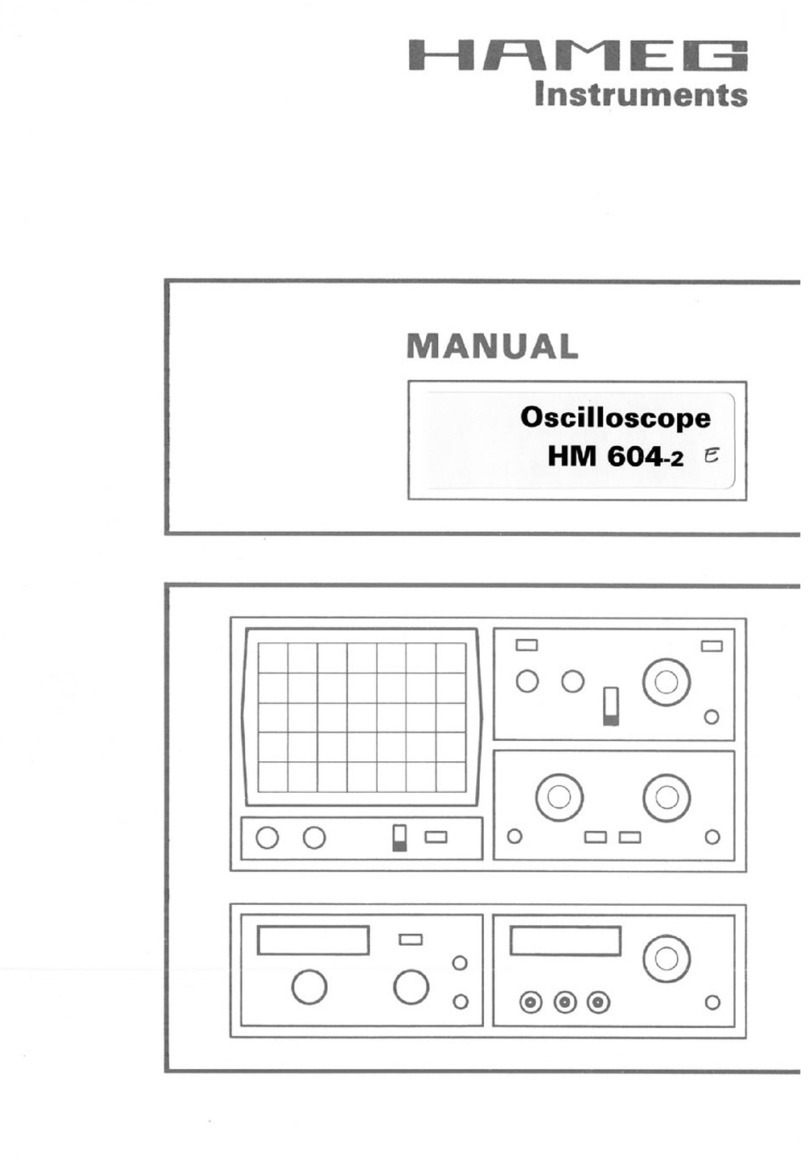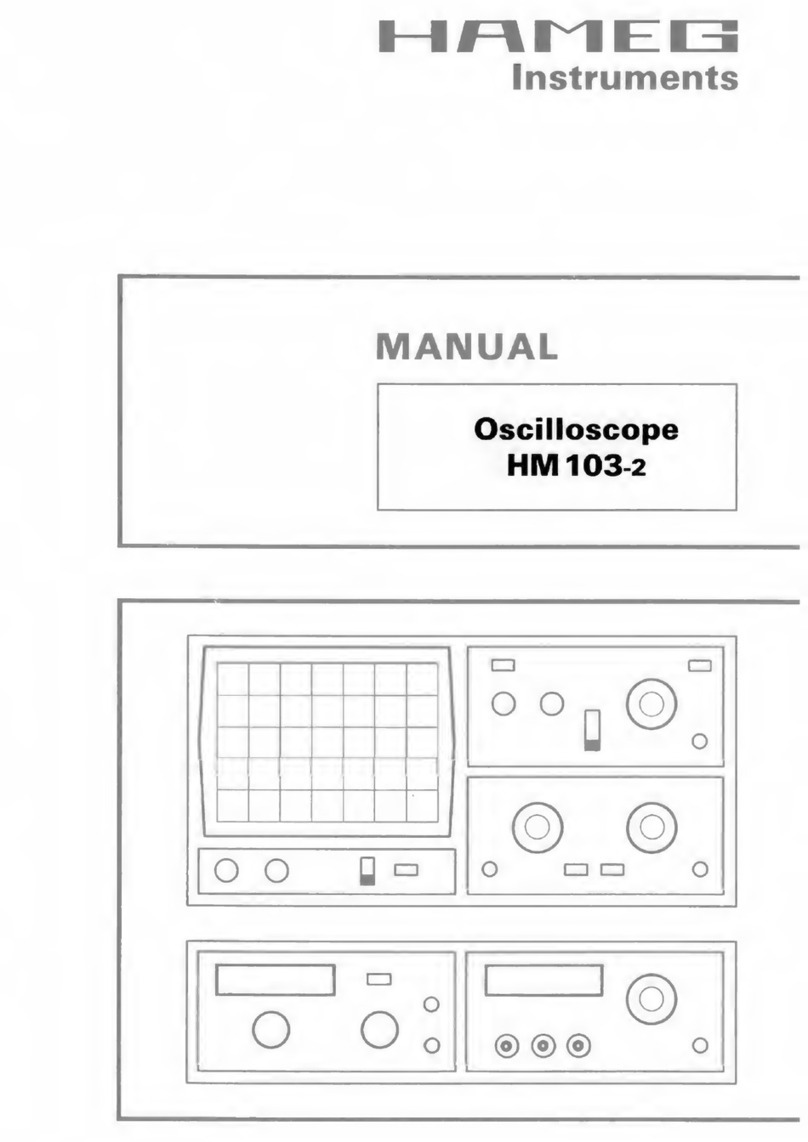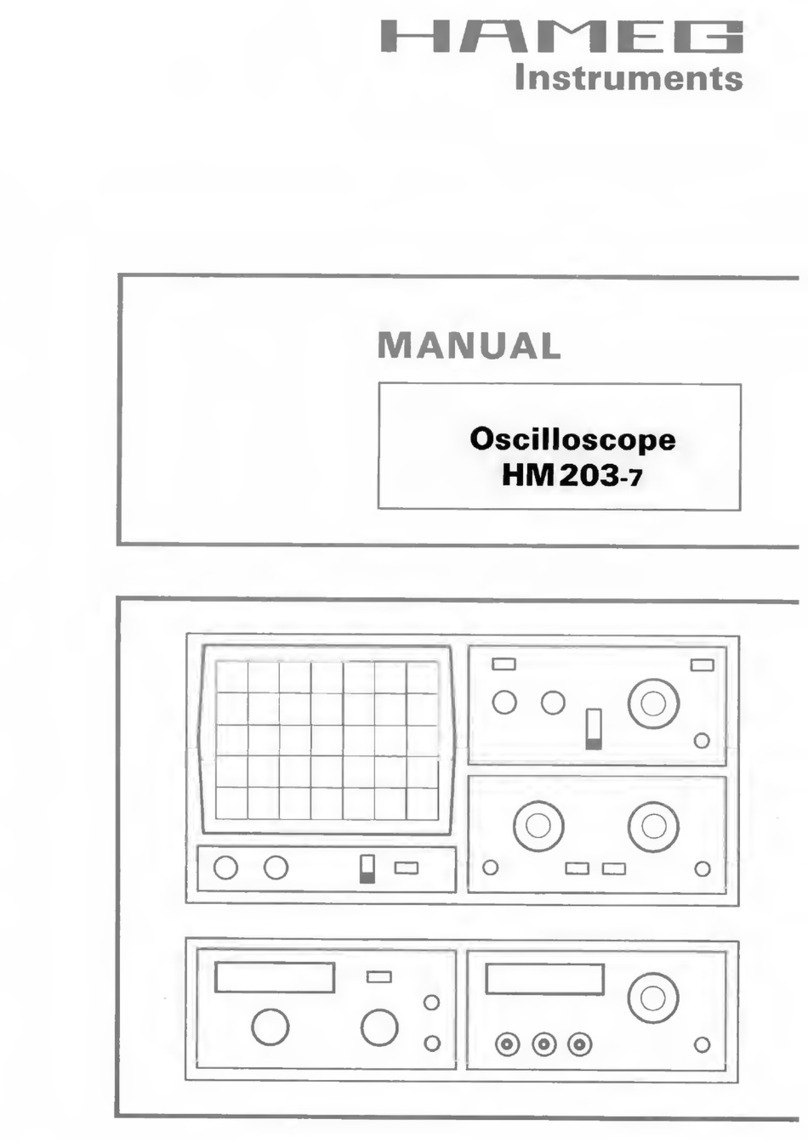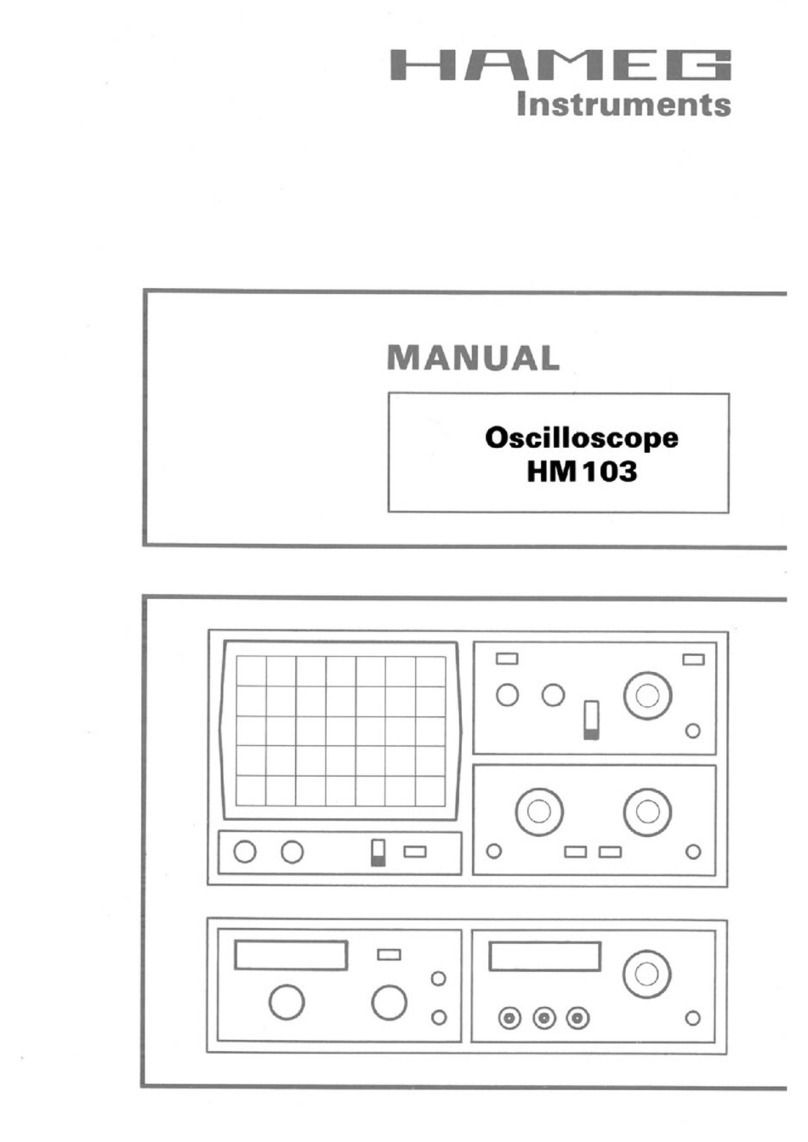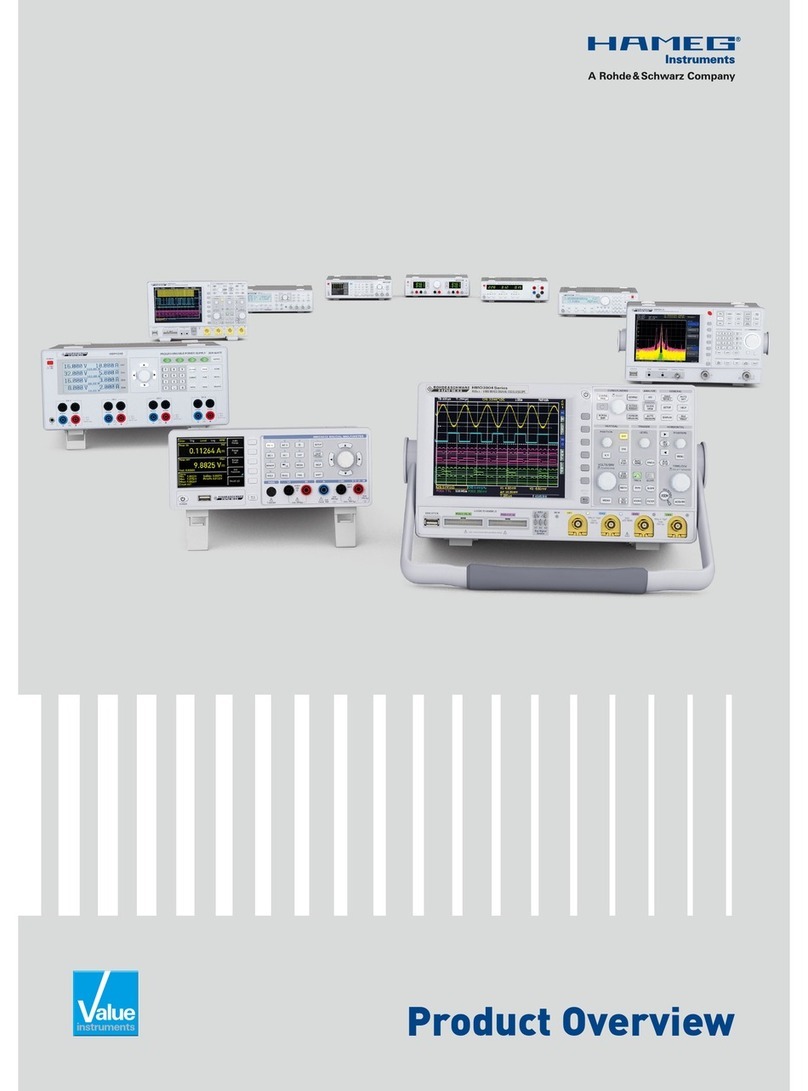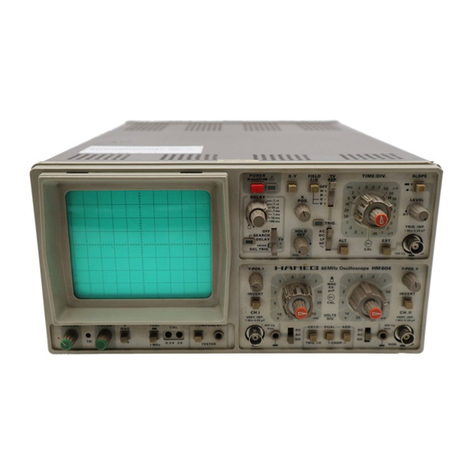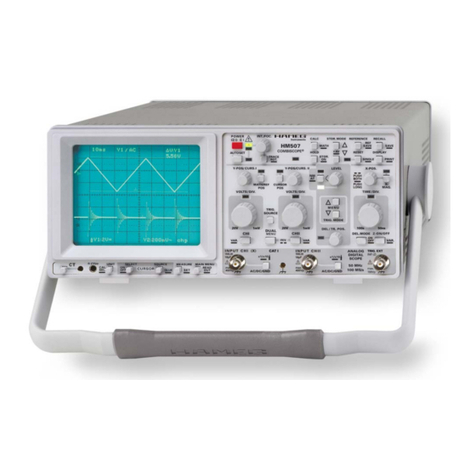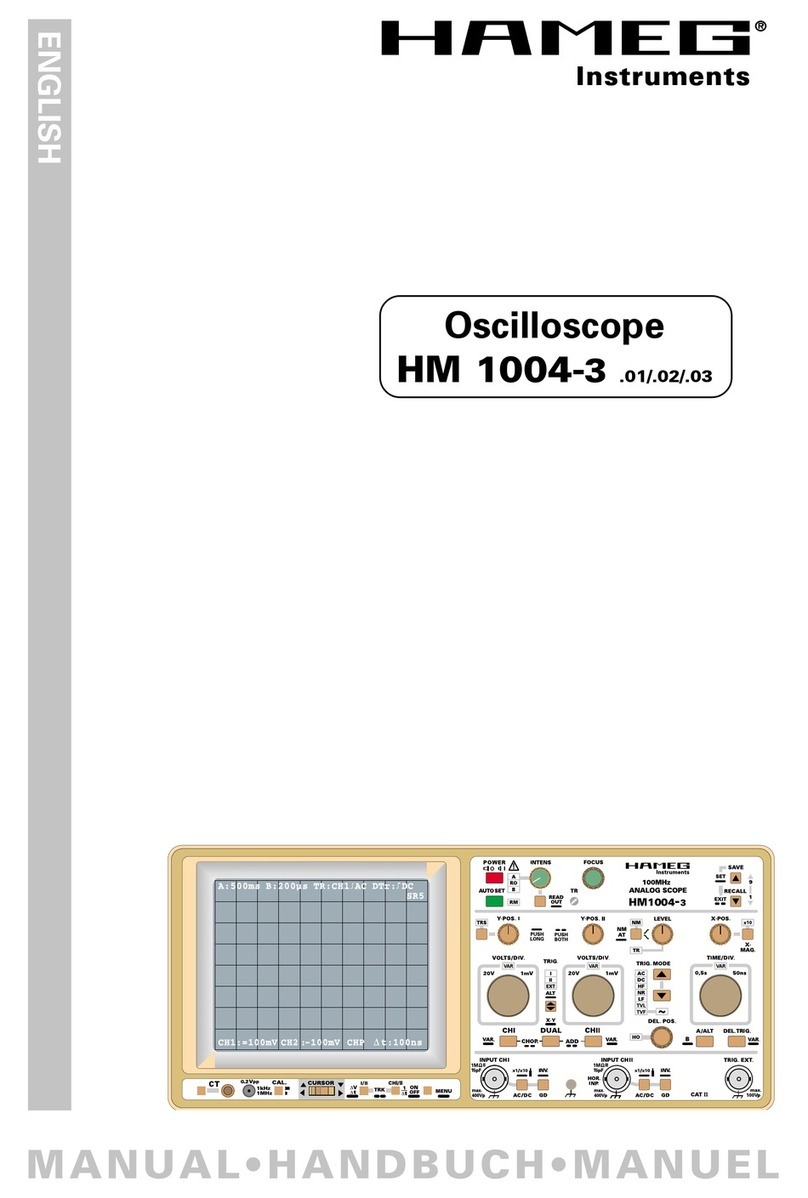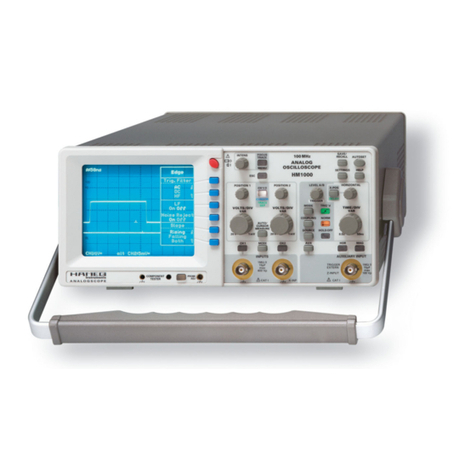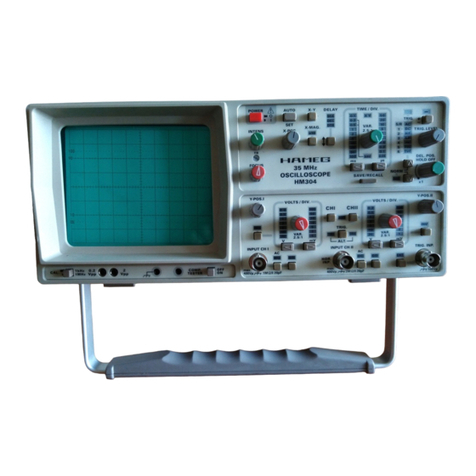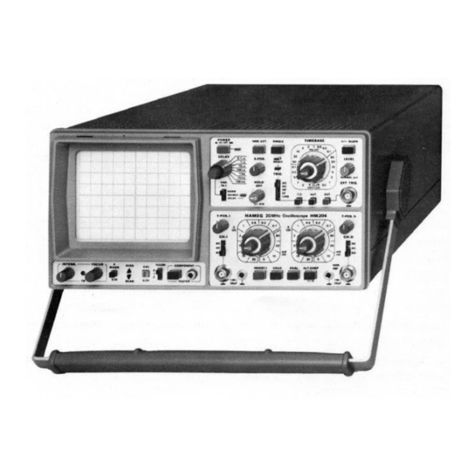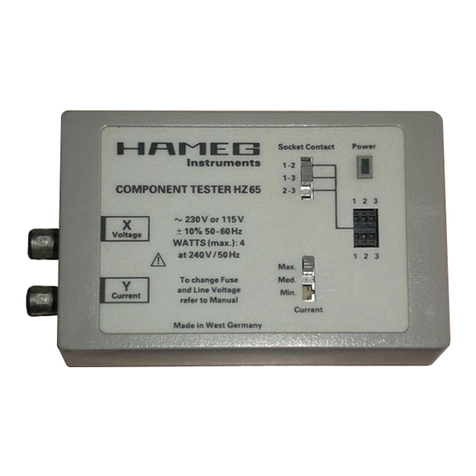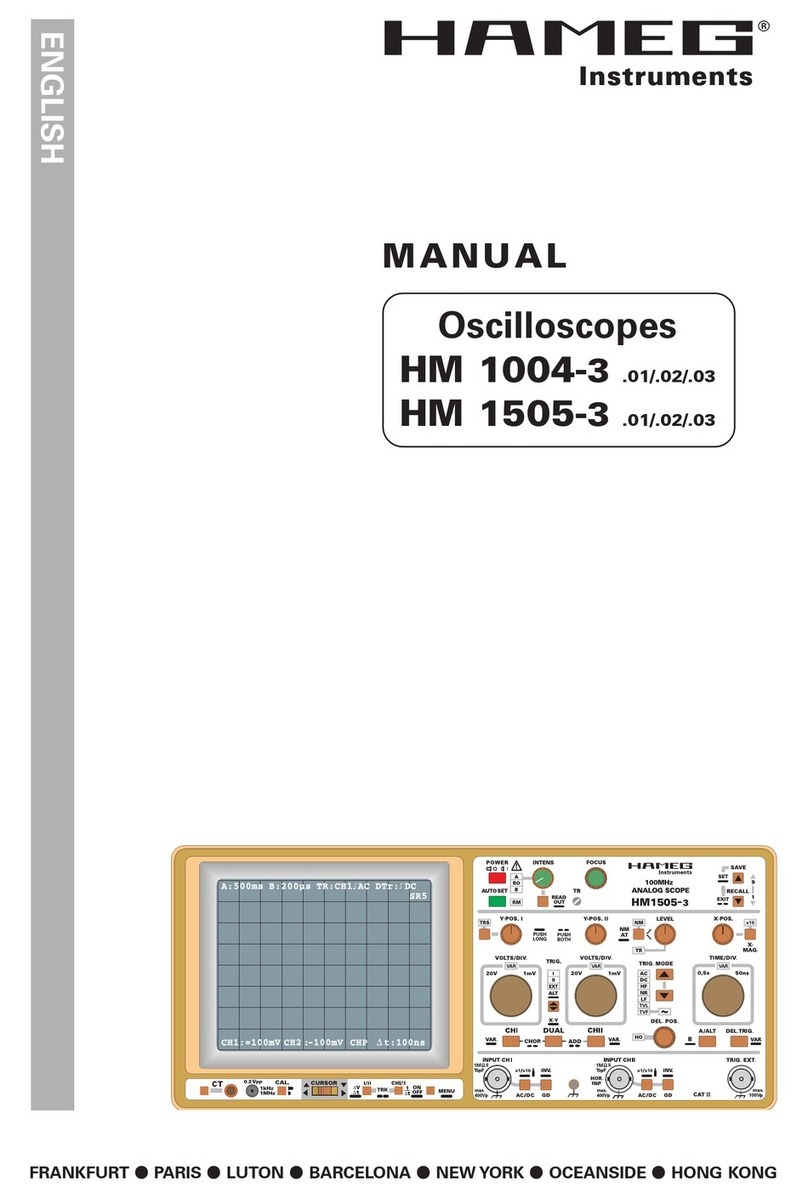
OPERATING INSTRUCTIONS
General Information
The new HM203-4 is as easy to use as all HAMEG in
struments. Technologically it represents the latest state
of engineering in this price range. This is particularly
illustrated by the increased use of monolithic integrated
circuits. The logical arrangement of the controls and con
nectors on the front panel ensures that the user will
quickly become familiar with the operation of the instru
ment. However, even experienced operators are advised
to read the following instructions thoroughly, as they in
clude important information relating to the use of the
HM203-4.
The front panel is subdivided into three sections accord
ing to the various functions. The X-MAGN. X5 pushbut
ton, the calibrator output (CAL. 0.2V), and the COMPO
NENT TESTER pushbutton and its measuring socket are
located on the left directly below the screen of the
cathode-ray tube (CRT).
The X-Section, located on the upper right, contains the
red POWER pushbutton and indicating lamp, the IN-
TENS., FOCUS, and TR (trace rotation) controls. To the
right of them, all controls and switches for TIMEBASE
and triggering and the TRIG. EXT. input connector are
arranged.
The lower Y-Section contains the controls for the vertical
deflection system. On the right and left in this section are
located: vertical input connector, DC-AC-GD input cou
pling slide switch, Y-POS. control, AMPL. attenuator
switch with variable control, and ground jack. All these
controls and connectors exist in duplicate for each of the
Channels I and II. Four pushbuttons for selecting the
operating mode are arranged below the attenuator swit
ches: INVERT I, CHI/II — TRIG. I/II, DUAL, and
ALT/C H O P- I + 11
The instrument is so designed that even incorrect opera
tion will not cause serious damage. The pushbuttons
control only minor functions, and it is recommended that
before commencement of operation all pushbuttons are
in the " o u t" position. After this the pushbuttons can be
operated depending upon the mode of operation
required. For a better understanding of these Operating
Instructions the front panel picture at the end of these
instructions can be unfolded for reference alongside the
text.
The HM203 accepts all signals from DC (direct voltage)
up to a frequency of at least 20MHz (-3dB). For sine-
wave voltages the upper frequency limit will be
30-35 MHz. However, in this higher frequency range the
vertical display height on the screen is limited to approx.
4-5cm . In addition, problems of time resolution also
arise. For example, with 2 5 MHz and the fastest ad
justable sweep rate (40ns/cm), one cycle will be
displayed every 1 cm. The tolerance on indicated values
amounts to ±3% in both deflection directions. All values
to be measured can therefore be determined reatively ac
curately. However, from approximately 6 MHz upwards
the measuring error will increase as a result of loss of
gain. At 12MHz this reduction is about 10%. Thus, ap
proximately 11 % should be added to the measured
voltage at this frequency. As the bandwidth of the
amplifiers differ (normally between 20 and 2 5 MHz), the
measured values in the upper limit range cannot be
defined exactly. Additionally, as already mentioned, for
frequencies above 20MHz the dynamic range of the
display height steadily decreases. The vertical amplifier is
designed so that the transmission performance is not
affected by its own overshoot.
Warranty
Before being shipped each instrument must pass a 10
hour quality control test. Almost every early failure can be
detected by means of intermittent operation during this
test. Nevertheless, a component may fail but only after a
longer period of operation. Therefore, all HAMEG in
struments are under warranty for a period of one year,
provided that the instrument has not undergone any
modifications. HAMEG will repair or replace products
which prove to be defective during the warranty period.
No other warranty is expressed or implied. HAMEG is not
liable for consequential damages. It is recommended that
the instrument be repackaged in the original manner for
maximum protection. We regret that transportation
damage due to poor packaging is not covered by this
warranty.
In case of any complaint, attach a tag to the instrument
with a description of the fault observed. Please supply
name and department, address and telephone number to
ensure rapid service.
Safety
This instrument is designed and tested according to inter
national safety standards (e.g. IEC 348: Safety re
quirements for electronic measuring apparatus). The
instrument has left the factory in perfect safety condition.
To preserve this state and to ensure operation without
danger, the user must observe all advises and warning
remarks in these Operating, Test, and Service Instruc
tions. The case, chassis, and all measuring terminals
are connected to the Safety Earth conductor. The
specification of the instrument corresponds to Safety
Class / (three-conductor AC power cable). The grounded
accessible metal parts (case, sockets, jacks) and the
power line circuit of the HM203 are tested against one
Printed in West Germany (1 983) Ml 203-4
